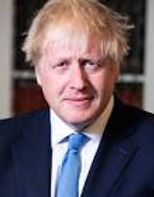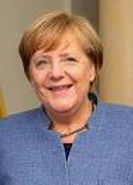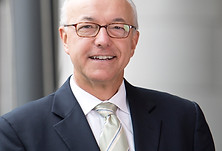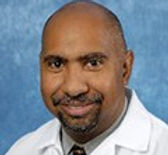
What we know and do not know about the virus

Nobel laureate Dr. Tasuku Honjo said that COVID-19 was "man-made" at a lab in Wuhan, China.

"All evidence so far points to the fact the COVID-19 virus is naturally derived and not man-made," explains immunologist Nigel McMillan from the Menzies Health Institute Queensland.
"If you were going to design it in a lab the sequence changes make no sense as all previous evidence would tell you it would make the virus worse. No system exists in the lab to make some of the changes found."

President Donald Trump said that U.S. intelligence officials are investigating whether the novel coronavirus began spreading after an accident at a Chinese high-security biomedical laboratory in Wuhan.
One scenario in circulation claims the virus was man-made and was linked to a Chinese biowarfare program, but that idea has been widely dismissed by experts and critics as a conspiracy theory. Another scenario maintains that the virus accidentally escaped due to poor safety protocols.
"

The UK government reportedly believes the coronavirus outbreak may have started in a Chinese laboratory, although most experts believe the outbreak began when animals passed the virus to humans in China, specifically in or near a market in the city of Wuhan where live animals were sold.
A UK parliamentary committee accused the Chinese government of spreading disinformation about the origins of the virus.
"

German Chancellor Angela Merkel called for China to be more forthcoming about the early days of the outbreak. “I believe the more transparent China is about the origin story of the virus, the better it is for everyone in the world in order to learn from it,” Merkel said.
The German government says China kept the “world in the dark” about the coronavirus — and should fork over $165 billion in reparations to Germany because of it.
"

French President Emmanuel Macron accused Beijing of not being upfront over its handling of the epidemic. The French position on China has been relatively measured, but Macron is beginning to call for a more thorough examination of its activities amid accusations Beijing has covered up the true scale of the epidemic. Macron's position lines up with the US officials' belief who have concluded that China concealed the extent of its outbreak and under-reported the number of cases and deaths.
"

Italian Prime-Minister Giuseppe Conte criticizes any report that advocates the idea about man-made COVID-19 virus and a conspiracy to hide from the international community vital information about the virus outbreak.
Mr. Conte repeatedly ascertains that these reports cannot be viewed as trustworthy.
"
We still do not know where the virus has originated. There is no doubt that the virus originated in China and the Chineses government should be more open to the international investigation.
Now, however, the most important and difficult part of work is the development of the vaccine against COVID-19
World leaders in vaccine development
The VIPRD.eu platform is working with global health authorities and vaccine developers to support the development of vaccines against COVID-19. To facilitate this effort, we have developed and are continuously maintaining an overview of the global landscape of COVID-19 vaccine development activity. The VIPRD database includes vaccine development labs along with other research projects. We also share our information with others in the global health ecosystem to help improve coordination in the COVID-19 outbreak and enable global resources and capabilities to be collected and directed towards the most promising vaccine candidates.
PhRMA - Biotechnology Innovation Organization
Moderna's Work on a Vaccine against COVID-19
Inovio Pharmaceutical: DNA plasmid encoding S protein delivered by electroporation
BARDA: Through a landmark, new partnership with Johnson & Johnson has committed more than $1 billion of investment to co-fund vaccine research
Novartis: plan to initiate clinical trial of canakinumab for patients with COVID-19 pneumonia

How to cure the virus

George Q. Daley, MD, PhD
Dean of the Faculty of Medicine
Most people who become ill with COVID-19 will be able to recover at home. No specific treatments for COVID-19 exist right now. But some of the same things you do to feel better if you have the flu — getting enough rest, staying well hydrated, and taking medications to relieve fever and aches and pains — also help with COVID-19.
In the meantime, scientists are working hard to develop effective treatments. Therapies that are under investigation include drugs that have been used to treat malaria and autoimmune diseases; antiviral drugs that were developed for other viruses, and antibodies from people who have recovered from COVID-19.
FOLLOW ME

J. Kevin Tucker, M.D.
John Kevin Tucker, MD is Medical Director of DCI Brigham/Faulkner Hospital, Director of the BWH/MGH Joint Nephrology Fellowship Program, the largest renal fellowship program in the United States and an Assistant Professor of Medicine at Harvard Medical School.

Gianrico Farrugia, M.D.
-
Holds academic rank of professor of medicine and physiology and has full faculty privileges in biomedical engineering at Mayo Graduate School. CEO of Mayo Clinic in Florida, 2014-2018. President and CEO, Mayo Clinic, effective January of 2019
Treatment
Currently, no antiviral medication is recommended to treat COVID-19, and no cure is available for COVID-19. Antibiotics aren't effective against viral infections such as COVID-19. Ongoing research is studying various drugs that may be effective for treating severe COVID-19.
Treatment is directed at relieving symptoms and may include:
-
Pain relievers (ibuprofen or acetaminophen)
-
Cough syrup or medication
-
Rest
-
Fluid intake
There is no evidence that ibuprofen or other nonsteroidal anti-inflammatory drugs (NSAIDS) need to be avoided.
If you have mild symptoms, your doctor may recommend that you recover at home. He or she may give you special instructions to monitor your symptoms and to avoid spreading the illness to others. You may be asked to isolate yourself as much as possible from family and pets while you're sick, wear a mask when you're around people, and to use a separate bedroom and bathroom. Your doctor will likely recommend that you stay in home isolation for a period of time except to get medical care. Your doctor will likely follow up with you regularly. Check with your doctor about when you can end home isolation.
Recommendations
-
As you touch people, surfaces, and objects throughout the day, you accumulate germs on your hands. You can infect yourself with these germs by touching your eyes, nose, or mouth.
To protect yourself, wash your hands often with soap and water for at least 20 seconds. If soap and water aren't available, use an alcohol-based hand sanitizer with at least 60% alcohol.
Always wash your hands before:
-
Preparing food or eating
-
Treating wounds or caring for a sick person
-
Inserting or removing contact lenses
-
Always wash your hands after:
-
Preparing food
-
Using the toilet, changing a diaper or cleaning up a child who has used the toilet
-
Touching an animal, animal feed or animal waste
-
Blowing your nose, coughing or sneezing
-
Treating wounds or caring for a sick person
-
Handling garbage
-
Handling pet food or pet treats
-
Also, wash your hands when they are visibly dirty.
-
How to wash your hands
-
It's generally best to wash your hands with soap and water. Over-the-counter antibacterial soaps are no more effective at killing germs than is regular soap.
-
Follow these steps:
-
Wet your hands with clean, running water — either warm or cold.
-
Apply soap and lather well.
-
Rub your hands vigorously for at least 20 seconds. Remember to scrub all surfaces, including the backs of your hands, wrists, between your fingers and under your fingernails.
-
Rinse well.
-
Dry your hands with a clean towel or air-dry them.
-
How to use an alcohol-based hand sanitizer
-
Alcohol-based hand sanitizers, which don't require water, are an acceptable alternative when soap and water aren't available. If you use a hand sanitizer, make sure the product contains at least 60% alcohol. Follow these steps:
-
Apply the gel product to the palm of one hand. Check the label to find out the appropriate amount.
-
Rub your hands together.
-
Rub the gel over all the surfaces of your hands and fingers until your hands are dry.
-
Kids need clean hands, too
-
Help children stay healthy by encouraging them to wash their hands frequently. Wash your hands with your child to show him or her how it's done. To prevent rushing, suggest washing hands for as long as it takes to sing the "Happy Birthday" song twice. If your child can't reach the sink on his or her own, keep a step stool handy.
-
Be sure to supervise young children using alcohol-based hand sanitizers. Swallowing alcohol-based sanitizers can cause alcohol poisoning. Store the container safely away after use.
-
A simple way to stay healthy
-
Hand-washing offers great rewards in terms of preventing illness. Adopting this habit can play a major role in protecting your health.
SUBSCRIBE
Diagnosis
If you develop symptoms of coronavirus disease 2019 (COVID-19) and you've been exposed to the virus, contact your doctor. Tell him or her if you've traveled to any areas with ongoing community spread of COVID-19 according to CDC and WHO. Also, let your doctor know if you've had close contact with anyone who has been diagnosed with COVID-19.
Factors used to decide whether to test you for COVID-19 may differ depending on where you live. Depending on your location, you may need to be screened by your clinic to determine if testing is appropriate and available. In the U.S., your doctor will determine whether to conduct tests for COVID-19 based on your signs and symptoms, as well as whether you have had close contact with someone diagnosed with COVID-19 or traveled to or lived in any areas with ongoing community spread of COVID-19 in the past 14 days. Your doctor may also consider testing if you're at a higher risk of serious illness. To test for COVID-19, a health care provider uses a long swab to take a nasal sample. The sample is then sent to a lab for testing. If you're coughing up saliva (sputum), that may be sent for testing.









